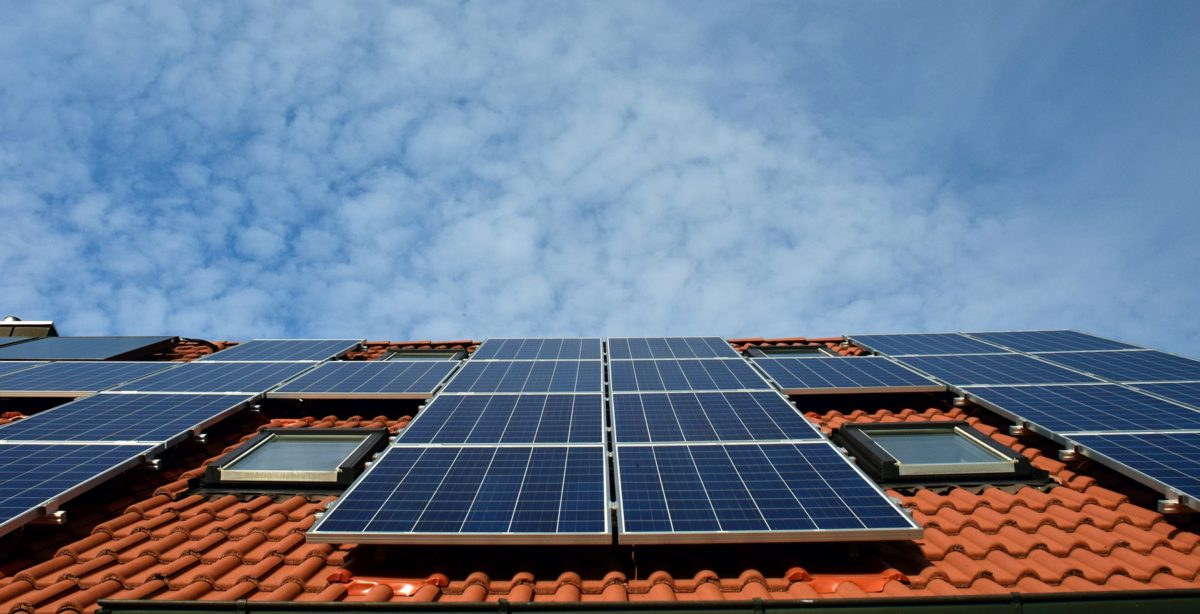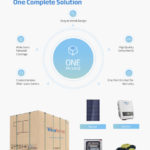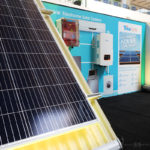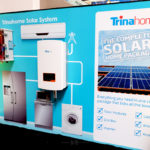The Philippines is blessed beyond measure when it comes to natural resources. That’s a fact. I don’t need to start citing written resources to point that out. And one resource that we are blessed with all year round is sunlight. The Department of Energy even said that “the country has a power generation potential of 4.5 to 5.5 kWh per square meter per day“. It only makes sense that us, Filipinos, need to start investing into solar power. At the very least, start investing in installing on-roof solar power systems.
I’d like to believe that some of us already have.
Solar outlook
Solar power is gaining ground as far as the Department of Energy’s data is concerned. If you compare and contrast December 2016 and December 2017 data on renewable energy projects, the increase in the number of awarded commercial projects is significant.
December 2016
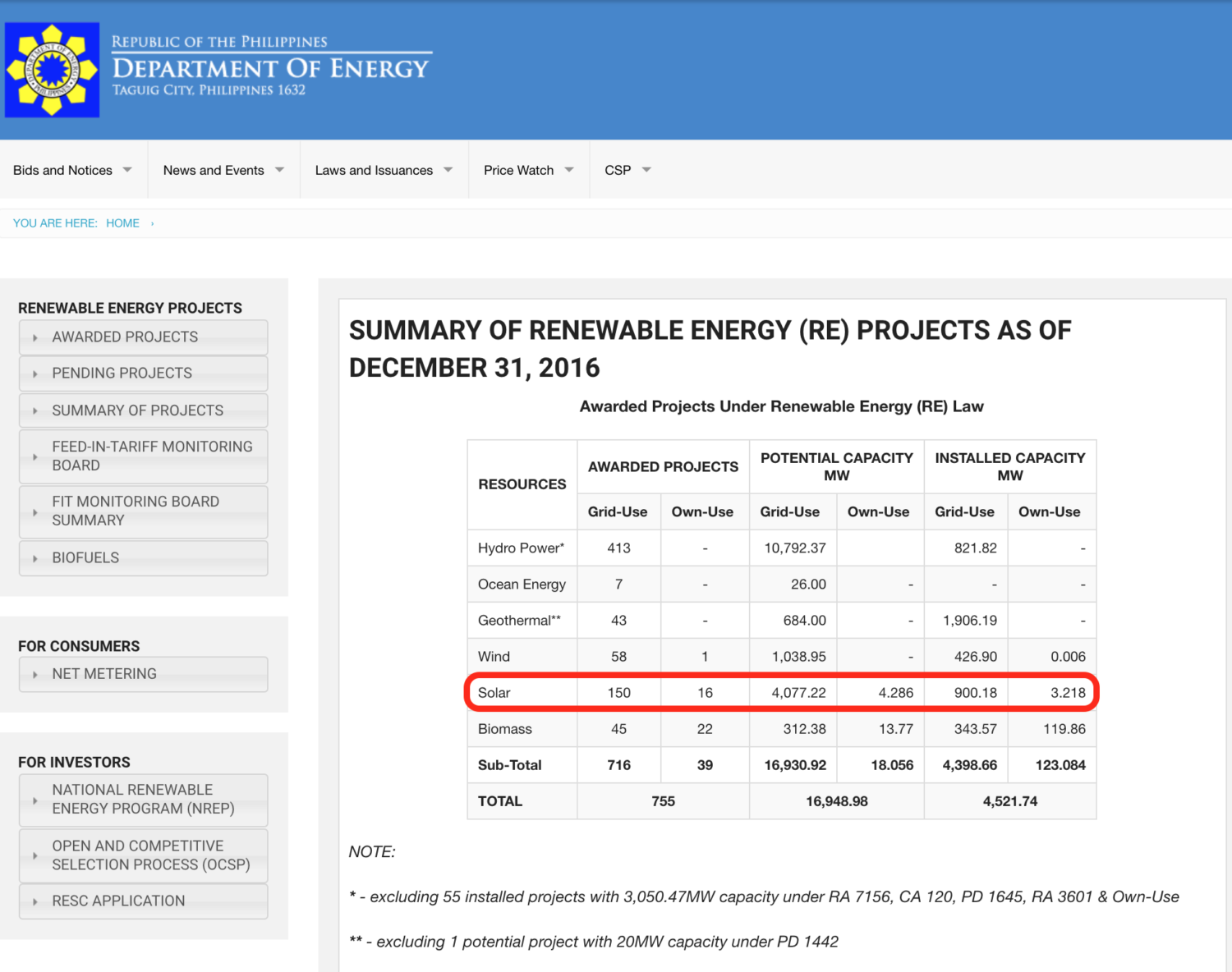
December 2017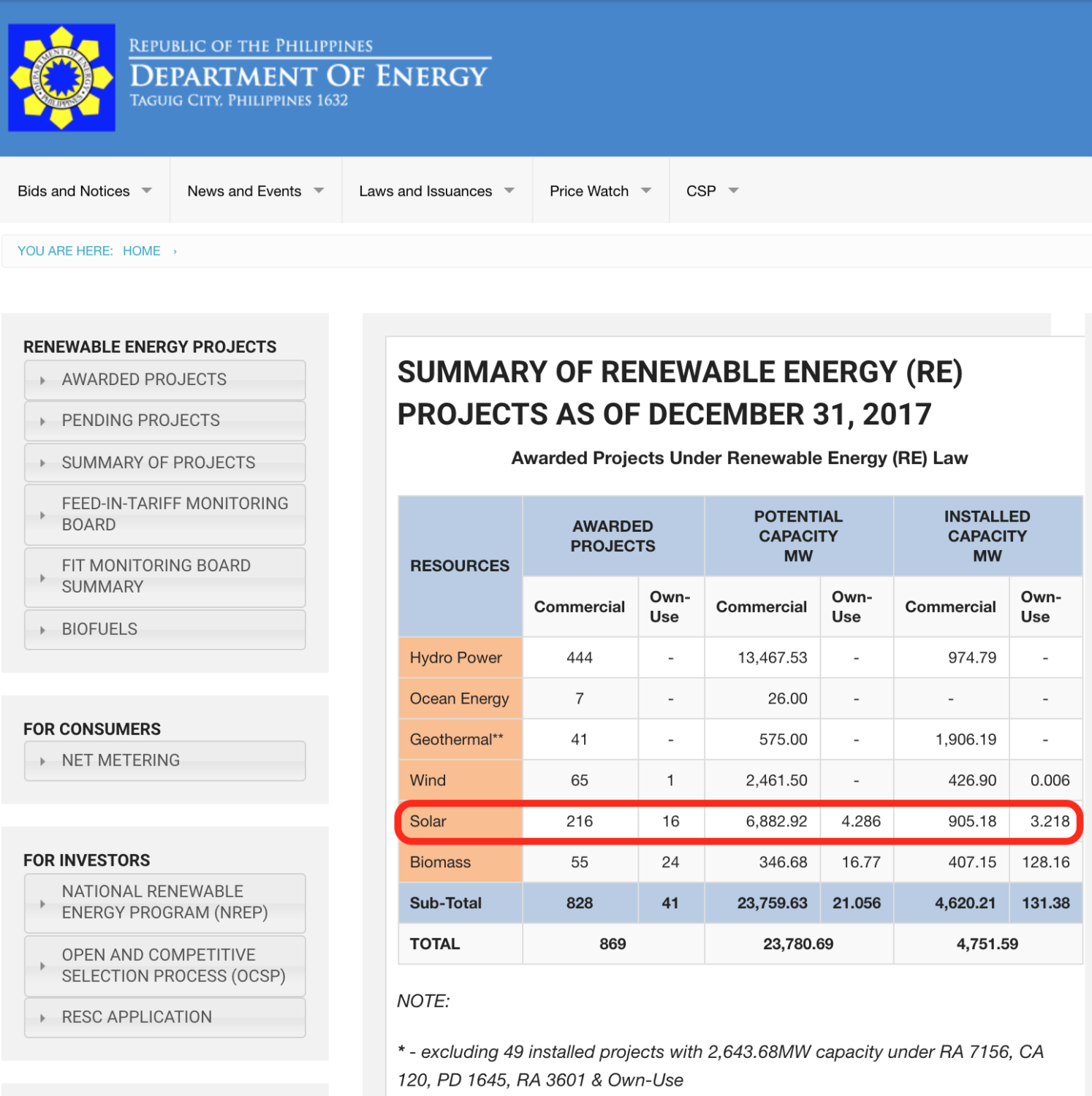
Along with the increased number of awarded projects, potential capacity in megawatts also increased. Sadly those are just potential capacity. Installed capacity didn’t change much. Just an increase of 5MW. That’s small if we start thinking on a national scale. We all have our guesses as to what’s causing the turtle-like pace of increasing installed capacity of solar power. As it stands as of December 2017, 905.18MW installed of the potential 6,882.92MW is, if my calculation input is correct, just 13.151%.
This is where we can do things our way by installing solar power systems for our own homes.
On-roof solar power
Here in Davao, enter Straight Arrow Technologies Inc. which launched Trinahome recently. Trinahome is a product of Trinasolar. It’s billed as an “all in one” solar system “designed for households and small-to-medium enterprises“.
I don’t have one installed at our residence so I can’t provide a full review. If I have one installed, I will write about how it’s affecting our power consumption and, subsequently, savings in power costs. I noticed that their demo installations during the launch day did not include batteries.
I wondered why the lack of batteries so I did a little digging. Unfortunately, I can’t find the answer in all the company websites. I reached out directly via email to Straight Arrow Technologies. The Chief Operating Officer himself, Bien Angelo Niño, sent a reply. “Trinahome is designed for savings not backup“, Bien said.
It makes sense. The system is there to become your personal power source instead of constantly relying on your power company. It may be a backup but, in my mind, can also become your primary source of power. Bien adds that “adding batteries… would not allow you a return on your investment as you may have to replace them every 2 years or so“. But hey, if you have deep pockets, nobody’s stopping you from putting a battery into the system. A Tesla Powerwall, maybe? Because, well, why not?
Power capacity options
Another good question to look into about the system is what home appliances (and how many) will it be able to supply power to for, maybe, hour of power outage. I’d love to find out in practice or, at the least, in theory. I have a feeling though that it can be computed based on the power capacity of the system you have and the total power consumption of the home appliances you plug into the system. As of this posting, there are three power capacity options available at Straight Arrow Tech – 1.5kW, 3.0kW, and 5.0kW. They’ll have a 10kW-system soon.
A second version of Trinahome, Bien said, will include batteries for “clients from places having 4-8 hours of blackouts… or those who just want to go off-grid“. So if you’re that kind of person (the off-grid kind), there’s something you can look forward to. In the meantime, I think the current system is more than suitable for the regular Filipino household who’s looking to save hard earned money. And with the existing Net Metering scheme from the Philippine government’s Department of Energy, there’s also a promise or potential of further savings with the solar power system in place.
Pricing, ROI
At first glance, the systems are prohibitively expensive. The system starts at Php.165,000 then goes all the way up to Php.475,000. Trinahome systems have an expected product life of 25 years. Bien says that ROI will between 6 to 7 years based on the normal Philippine conditions. Of course, your mileage may vary depending on many other factors like your place of residence, how much your power company charges you per kilowatt-hour, climate behaviour and many more. I would assume that the prices for the systems will already include pre-installation and installation services.
Their brochure does say that Trinahome provides a standard 5-year warranty. They also said there’s a 10-year product warranty on the PV modules, a 5-year warranty on the inverter and grid box and a 25-year performance warranty on the PV modules. That’s a lot in there but I’d still want to know the exact details of each of those warranties before we can really say if it’s totally worth it or not. A six-figure sum for a solar power system is a whole lot of pesoses and not everyone will have that much to spend. In the end, it’ll be about total value for your money.
In the meantime, they’re running a Christmas sale.

My thoughts
I’ve always been a fan of renewable energy. More so if it’s something that will, ultimately, have a smaller negative impact on the planet. Installing your own solar power generation system is a positive step towards power self-reliance. Photovoltaic cell technology has improved in leaps and bounds over the last decade or two so conversion rates of solar power systems are high. I think it’s the right time to start thinking about a self contained system installed in your residence. Sure, it may look expensive at first glance but the returns through savings over the long run will more than enough cover the initial investment.
The all-in-one solution offered by Straight Arrow Tech with Trinahome is something to really look into. I’m sure there are other systems out there that can compete with it. And a little more time devoted into researching for other product solutions will go a long way. For now, I don’t know of any other all-in-one solution that’s already available here in Davao City.
In the end, I say don’t rush into getting one right away. Talk to the companies that are offering these products. Bien from Straight Arrow Tech has been very helpful with me when I was putting together my thoughts for this post. Personally, that’s something I also value in a company – excellent customer service.
In this day and age, we’re all starting to become more and more aware of the environment around us. We’re also becoming more conscious about our carbon footprint and how we’re affecting the planet in small ways here and there. Having a renewable energy source right at your home is one small step towards a giant win for Mother Earth.
Featured photo by ulleo from Pixabay.
